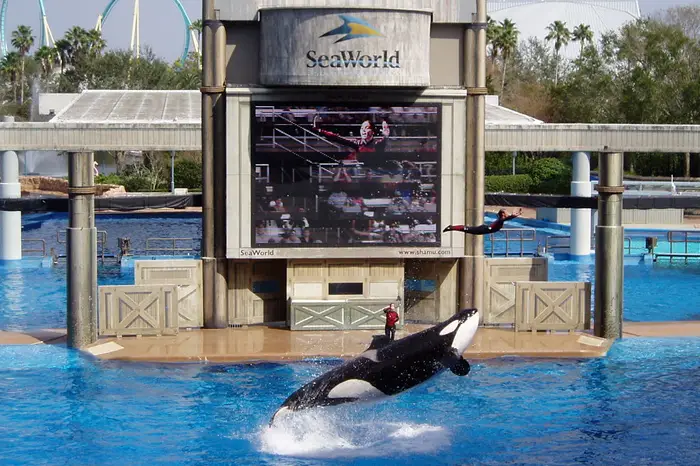 Milton C. Shedd, Ken Norris, David Demont, and George Millay brought SeaWorld to life, yet that was not the initial idea. The four graduates of UCLA originally set out to build an underwater restaurant and marine life show. When the underwater restaurant concept was deemed unfeasible, they scrapped those plans and decided to build a park instead, and SeaWorld San Diego was born on March 21, 1964. With only a few dolphins, sea lions, 6 attractions and 22 acres, the park proved to be a success and more than 400,000 guests visited there in just the first 12 months.
Milton C. Shedd, Ken Norris, David Demont, and George Millay brought SeaWorld to life, yet that was not the initial idea. The four graduates of UCLA originally set out to build an underwater restaurant and marine life show. When the underwater restaurant concept was deemed unfeasible, they scrapped those plans and decided to build a park instead, and SeaWorld San Diego was born on March 21, 1964. With only a few dolphins, sea lions, 6 attractions and 22 acres, the park proved to be a success and more than 400,000 guests visited there in just the first 12 months.
After considering other locations in the midwest, including the Lake Milton/Newton Falls area just west of Youngstown, Ohio, it was decided that Aurora, just 30 miles southeast of Cleveland, would be the new home of a SeaWorld. By this time the founders of the company had captured a few more species of animals including an Orca that would call the new facility home. The Ohio site would prove to be challenging. The harsh winter climate permitted the park to be open only from mid-May until mid-September. However, the vast population of the Midwest and Northeastern states lived within a day’s drive of the park, which would eventually add to the success of SeaWorld of Ohio.
The Walt Disney World Resort in Orlando, Florida opened near the end of the second operating season of SeaWorld of Ohio. The success of Disney in Orlando provided another ideal spot to capitalize on the mass number of tourists that would make their way to central Florida for vacations. Since opening day in 1973, SeaWorld of Florida has thrived in a place known as ‘the theme park mecca of the world’.
Harcourt Brace Jovanovich, Inc. purchased the company in 1976 and 12 years later they ventured deep into the heart of Texas. In 1988 SeaWorld Texas opened just a few miles outside of San Antonio. Although the climate was more like that of its Ohio counterpart, the park did have a longer operating season. Still, this park was not open year-round like its sister parks in California and Florida. The stress and financial resources it took to build and maintain a state-of-the-art marine mammal facility in the late ’80s eventually took its toll on the company.
HBJ, whose primary focus was producing school books, needed to reduce its assets in order to avoid a bankruptcy.
The Anheuser-Busch Company made an offer to purchase the SeaWorld parks. However, HBJ also owned and operated two other parks, Cypress Gardens and Boardwalk and Baseball, and out of fear of not being able to find a buyer for the two other parks HBJ refused to sell the parks individually. Despite a long negotiation, Anheuser-Busch bought all six parks: SeaWorld in San Diego, Aurora, Orlando and San Antonio as well as Cypress Gardens in Winter Haven and Boardwalk and Baseball in Baseball City. Soon after the sale was final, Busch sold Cypress Gardens to the park’s management and closed Boardwalk and Baseball. Anheuser-Busch put millions of dollars back into the parks to revive and to prolong their longevity.

